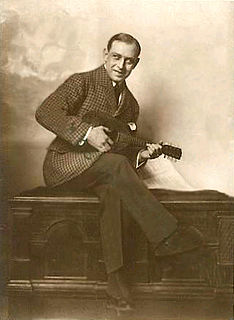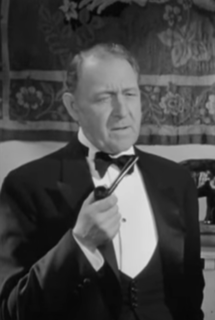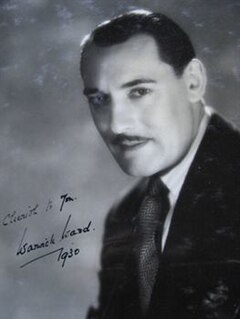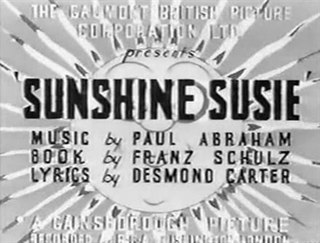Related Research Articles
Hans Dreier was a German motion picture art director. He was Paramount Pictures' supervising art director from 1927 until his retirement in 1950, when he was succeeded by Hal Pereira.
Alfred Junge was a German-born production designer who spent a large part of his career working in the British film industry.

Frederic Zelnik was an Austrian producer, director, and actor. He was one of the most important producers-directors of the German silent cinema. Zelnik achieved success through period operetta films in the 1920s and 1930s.

Harry C. Myers was an American film actor and director, sometimes credited as Henry Myers. He performed in many short comedy films with his wife Rosemary Theby. Myers appeared in 330 films between 1908 and 1938, and directed 54 films between 1913 and 1917.

Holmes Herbert was an English character actor who appeared in Hollywood films from 1915 to 1952, often as a British gentleman.

Alfred Peter Abel was a German film actor, director, and producer. He appeared in more than 140 silent and sound films between 1913 and 1938. His best-known performance was as Joh Fredersen in Fritz Lang's 1927 film, Metropolis.

Warwick Ward was an English actor of the stage and screen, and a film producer. He appeared in more than 60 films between 1919 and 1933. He also produced 19 films between 1931 and 1958. He was born in St. Ives, Cornwall.
Sinclair Hill was a British film director, producer and screenwriter. He directed nearly fifty films between 1920 and 1939. He was born as George Sinclair-Hill in London in 1894. He was awarded an OBE for his services to film.

Sunshine Susie is a 1931 British musical comedy film directed by Victor Saville and starring Renate Müller, Jack Hulbert, and Owen Nares. The film was shot at Islington Studios with sets designed by Alex Vetchinsky. It was based on a novel by István Szomaházy. An alternate German-language version The Private Secretary was made, also starring Renate Müller.
Oscar Friedrich Werndorff (1880–1938) was an Austrian art director. After leaving Germany in the early 1930s he moved to Britain where he worked in the British film industry. He co-directed the 1931 film The Bells.
Günther Krampf was an Austrian cinematographer who later settled and worked in Britain. Krampf has been described as a "phantom of film history" because of his largely forgotten role working on a number of important films during the silent and early sound era. Only two of Krampf's films The Student of Prague (1926) and The Ghoul (1933) were expressionist, as he generally used a naturalistic style.
Werner Brandes was a German cinematographer. Brandes moved to Britain in the late 1920s to work on several prestige films for British International Pictures.
Josef Somlo (1884–1973) was a Hungarian film producer. Following the Nazi takeover in Germany, where he had worked for a number of years, Somlo went into exile in Britain. During his German period he was associated with Hermann Fellner with whom he co-produced a number of films for their Felsom Film company.
Number 17 is a 1928 German-British silent crime film directed by Géza von Bolváry and starring Guy Newall, Lien Deyers, and Carl de Vogt.
Felsom Film was a film production company which operated in Weimar Germany between 1922 and 1933. It was founded and run by the two producers Hermann Fellner and Josef Somlo. The company's name is a merger of their surnames.
Karl Hasselmann was a German cinematographer who worked on over a hundred films during a long career. He collaborated with Ewald André Dupont on a number of productions for Gloria Film such as Whitechapel. He worked on eleven films with Karl Grune.
Paul Merzbach (1888–1943) was an Austrian screenwriter and film director. Merzbach worked in the Austrian and Germany film industries during the early stages of his career. He worked initially on scripts, but in 1924 he directed his first film. During the late 1920s, Merzbach worked in Sweden before returning to Germany.
Robert Neppach was an Austrian architect, film producer and art director. Neppach worked from 1919 in the German film industry. He oversaw the art direction of over eighty films during his career, including F.W. Murnau's Desire (1921) and Richard Oswald's Lucrezia Borgia (1922). Neppach was comparatively unusual among set designers during the era in having university training.
Norman G. Arnold was a British art director who designed the sets for over a hundred and twenty films.
Robert Herlth was a German art director. He was one of the leading designers of German film sets during the 1920s and 1930s.
References
- ↑ Bergfelder & Cargnelli p.112